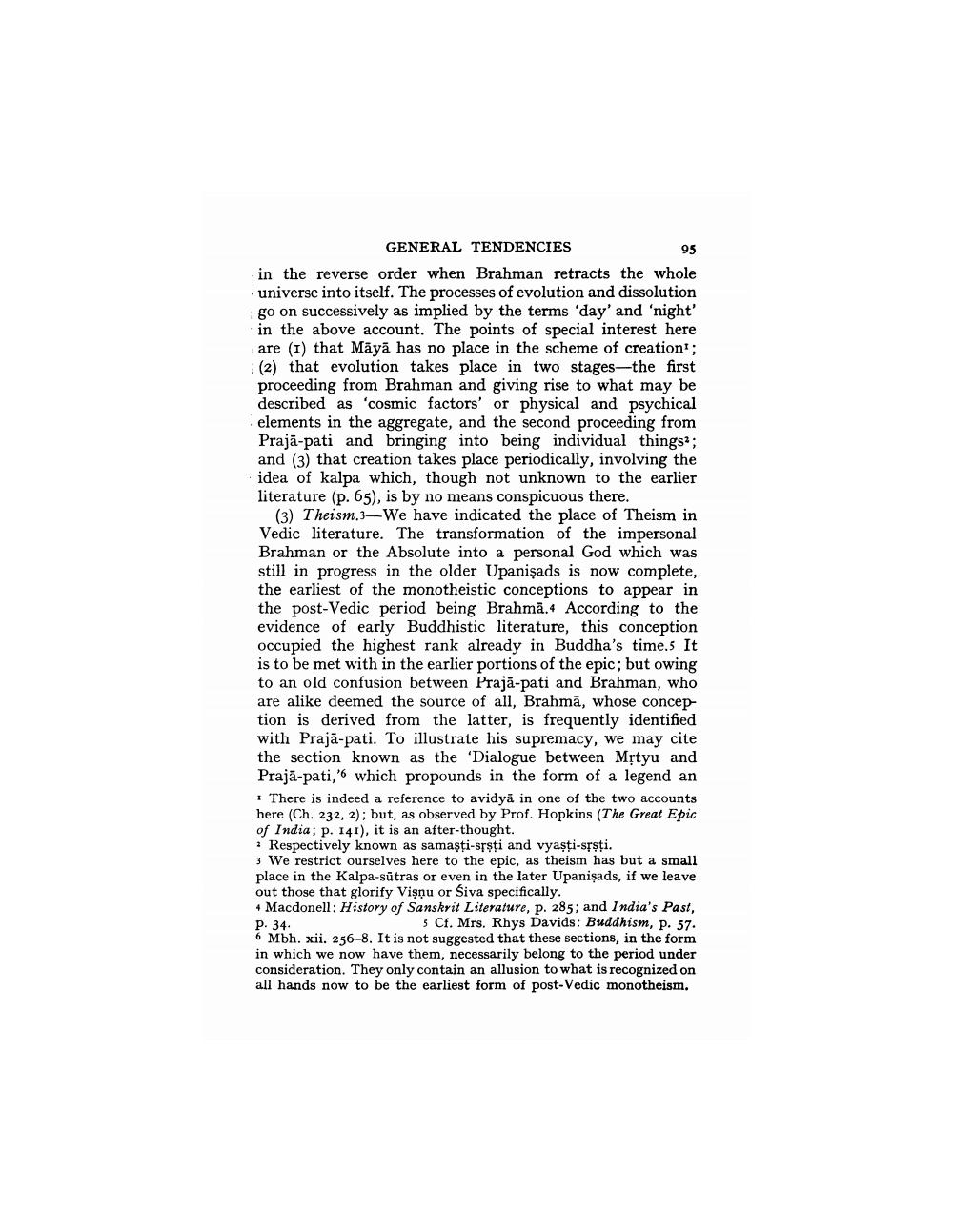________________
GENERAL TENDENCIES
95 in the reverse order when Brahman retracts the whole universe into itself. The processes of evolution and dissolution go on successively as implied by the terms 'day' and 'night' in the above account. The points of special interest here are (I) that Māyā has no place in the scheme of creation"; (2) that evolution takes place in two stages-the first proceeding from Brahman and giving rise to what may be described as "cosmic factors' or physical and psychical elements in the aggregate, and the second proceeding from Prajā-pati and bringing into being individual things2; and (3) that creation takes place periodically, involving the idea of kalpa which, though not unknown to the earlier literature (p. 65), is by no means conspicuous there.
(3) Theism, 3—We have indicated the place of Theism in Vedic literature. The transformation of the impersonal Brahman or the Absolute into a personal God which was still in progress in the older Upanişads is now complete, the earliest of the monotheistic conceptions to appear in the post-Vedic period being Brahmā.4 According to the evidence of early Buddhistic literature, this conception occupied the highest rank already in Buddha's time. It is to be met with in the earlier portions of the epic; but owing to an old confusion between Prajā-pati and Brahman, who are alike deemed the source of all, Brahmā, whose conception is derived from the latter, is frequently identified with Prajā-pati. To illustrate his supremacy, we may cite the section known as the 'Dialogue between Mrtyu and Prajā-pati,' which propounds in the form of a legend an 1 There is indeed a reference to avidyā in one of the two accounts here (Ch. 232, 2); but, as observed by Prof. Hopkins (The Great Epic of India; p. 141), it is an after-thought. * Respectively known as samasti-srsti and vyaşti-srsti. 3 We restrict ourselves here to the epic, as theism has but a small place in the Kalpa-sūtras or even in the later Upanişads, if we leave out those that glorify Vişņu or Siva specifically.
Macdonell: History of Sanskrit Literature, p. 285; and India's Past, P. 34.
5 Cf. Mrs. Rhys Davids: Buddhism, p. 57. 6 Mbh. xii. 256-8. It is not suggested that these sections, in the form in which we now have them, necessarily belong to the period under consideration. They only contain an allusion to what is recognized on all hands now to be the earliest form of post-Vedic monotheism.




